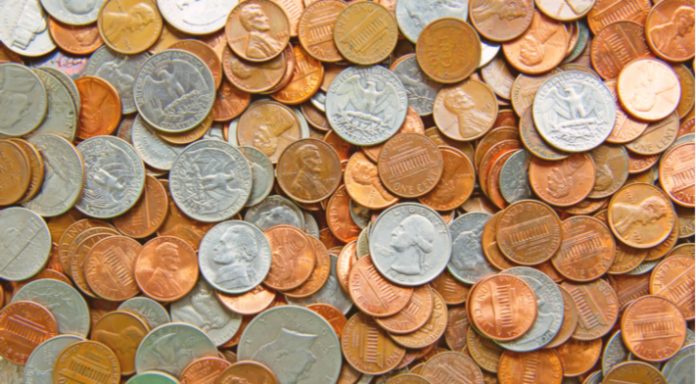The pound closed higher versus the dollar for a second straight session. The pound US dollar exchange rate hit a peak of US$1.2961, before slipping marginally lower into the close.
| What do these figures mean? |
|---|
| When measuring the value of a pair of currencies, one set equals 1 unit and the other shows the current equivalent. As the market moves, the amount will vary from minute to minute.For example, it could be written:1 GBP = 1.28934 USDHere, £1 is equivalent to approximately $1.29. This specifically measures the pound’s worth against the dollar. If the US dollar amount increases in this pairing, it’s positive for the pound. Or, if you were looking at it the other way around:1 USD = 0.77786 GBPIn this example, $1 is equivalent to approximately £0.78. This measures the US dollar’s worth versus the British pound. If the sterling number gets larger, it’s good news for the dollar. |
With no high impacting data in the previous session, and few Brexit headlines, investors reflected on Brexit headlines earlier in the week. The pound has spiked higher after rumours circulated that Germany was willing to accept a less detailed Brexit deal, meaning that a Brexit agreement would be more likely. However, Germany quickly set the markets straight informing that they trust Michel Barnier Chief EU negotiator to make the right decisions and that the rumours were not true.
With no economic data or Brexit headlines, the pound drifted higher thanks to general optimism and a slightly weaker dollar.
Today data will be back in focus with investors looking towards the Bank of England quarterly inflation expectation survey. In July the survey showed that the public saw inflation at 2.9% in 12 months’ time. Should today’s reading remain constant or move higher, then the pound could receive a boost. Higher inflation expectations lead to higher interest rate expectations, which drives demand for a currency.
| Why do raised interest rates boost a currency’s value? |
|---|
| Interest rates are key to understanding exchange rate movements. Those who have large sums of money to invest want the highest return on their investments. Higher interest rate environments tend to offer higher yields. So, if the interest rate or at least the interest rate expectation of a country is relatively higher compared to another, then it attracts more foreign capital investment. Large corporations and investors need local currency to invest. More local currency used then boosts the demand of that currency, pushing the value higher. |
Tariffs and Jobs in Focus
The dollar has fallen slightly out of favour with investors, despite strong economic data releases. Whilst the trade war is still simmering along in the background a lack of fresh developments have meant that investors have not been in search of its safe haven properties. This could change at any moment. With President Trump’s consultation period over for additional tariffs on $200 billion worth of Chinese imports, investors are expecting the tariffs to be applied at any moment. These could send the dollar higher.
US jobs data will also be in focus. Analysts are expecting the highly anticipated non-farm payrolls to show that 191,000 news jobs were created in the US in August. The unemployment level is also expected to tick lower, at a multi decade low of 3.8%. Wage growth, which is a central focus for reports, is expected to be 0.2%, down slightly from 0.3% in July. A solid set of numbers could help lift the dollar.
| How does the non-farm payroll (NFP) affect the US dollar? |
|---|
| It works like this, when there is low unemployment and high job creation, the demand for workers increases. As demand for workers goes up, wages for those workers also go up. Which means the workers are now taking home more money to spend on cars, houses or in the shops. As a result, demand for goods and services also increase, pushing the prices of the good and services higher. That’s also known as inflation. When inflation moves higher, central banks are more likely to raise interest rates, which then pushes up the currency’s worth. |
This publication is provided for general information purposes only and is not intended to cover every aspect of the topics with which it deals. It is not intended to amount to advice on which you should rely. You must obtain professional or specialist advice before taking, or refraining from, any action on the basis of the content in this publication. The information in this publication does not constitute legal, tax or other professional advice from TransferWise Inc., Currency Live or its affiliates. Prior results do not guarantee a similar outcome. We make no representations, warranties or guarantees, whether express or implied, that the content in the publication is accurate, complete or up to date. Consult our risk warning page for more details.
This article was initially published on TransferWise.com from the same author. The content at Currency Live is the sole opinion of the authors and in no way reflects the views of TransferWise Inc.





